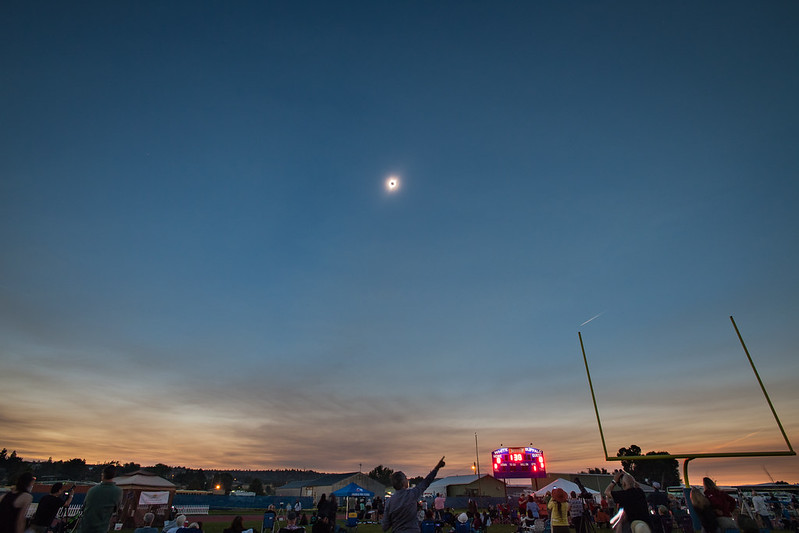What to Expect: A Solar Eclipse Guide
What to Expect When You're Expecting a Total Solar Eclipse
So You're Expecting an Eclipse?
 The total solar eclipse on Aug. 21, 2017, was photographed from Madras, Oregon. The black circle in the middle is the Moon. Surrounding it are white streams of light belonging to the Sun’s outer atmosphere, called the corona.NASA/Aubrey Gemignani
The total solar eclipse on Aug. 21, 2017, was photographed from Madras, Oregon. The black circle in the middle is the Moon. Surrounding it are white streams of light belonging to the Sun’s outer atmosphere, called the corona.NASA/Aubrey GemignaniHere’s a guide to help you prepare for the big day.
The total solar eclipse on Aug. 21, 2017, was photographed from Madras, Oregon. The black circle in the middle is the Moon. Surrounding it are white streams of light belonging to the Sun’s outer atmosphere, called the corona.
Credits: NASA/Aubrey Gemignani
Before the Eclipse
First, find out where the eclipse will happen.
If you want to experience the one-of-a-kind phenomenon of a total solar eclipse, you will have to be located within a long but narrow path, usually less than 150 miles wide, called the path of totality.
On the same day, though, a partial solar eclipse will be visible across a much larger area (but not the entire globe). Consult an eclipse map, like this one, to find out where the eclipse will happen and what type of eclipse is visible in different locations.
Download the Map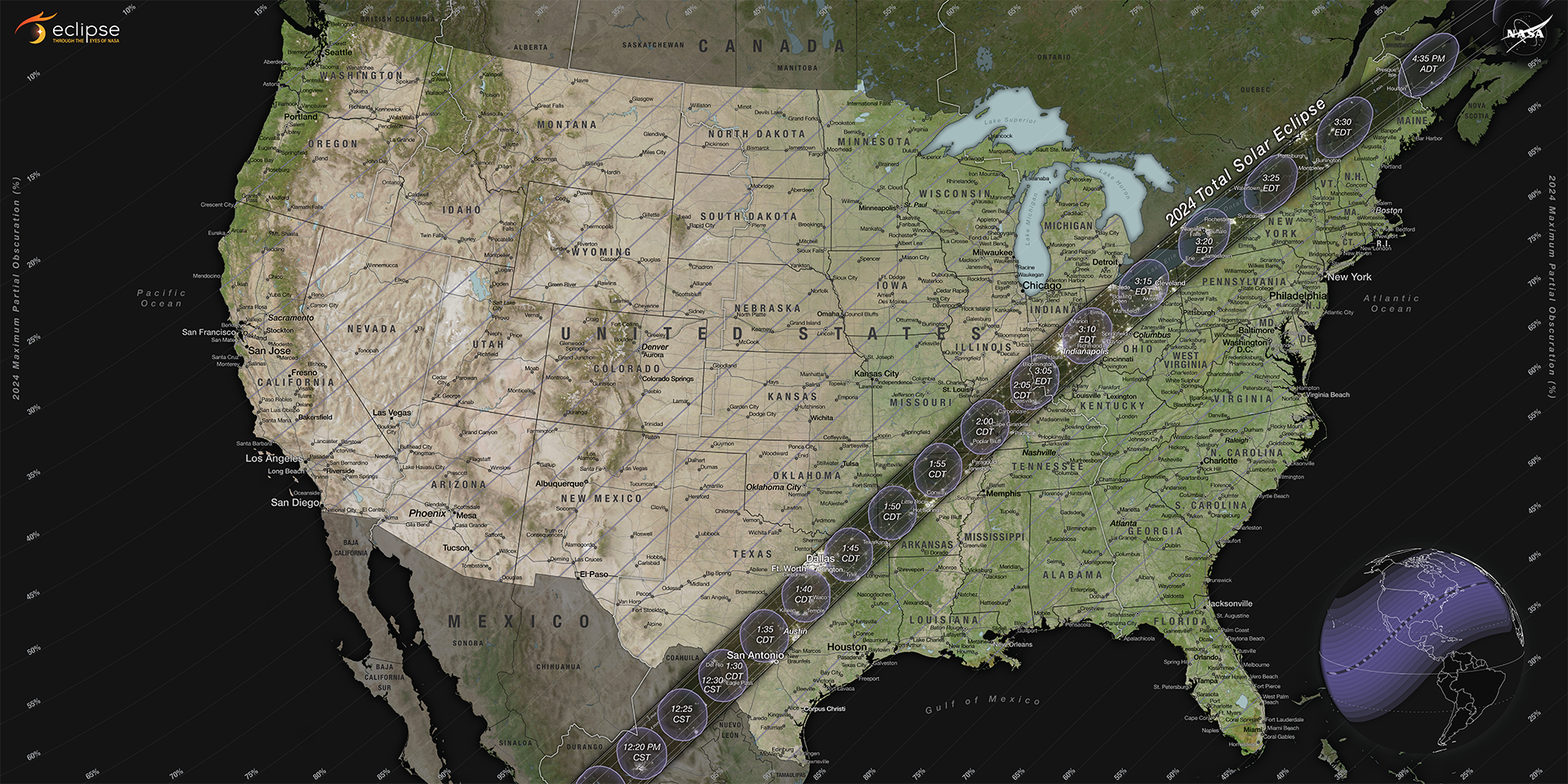
Second, decide where you will go to watch the eclipse.
If you already live somewhere the eclipse can be seen, great! You don’t have to go anywhere. But if you don’t, you will need to make travel plans.
If you want to see a total eclipse, act fast! Hotels and campgrounds in the path of totality sell out quickly, as many people will travel from far and wide to see the spectacular celestial event of a total solar eclipse. You’ll want to find lodging as early as you can. Otherwise, you might end up paying more than you expect to, or you will have to get creative. Do you have friends or family who live in the path of totality who would be eager to have you visit during the eclipse?
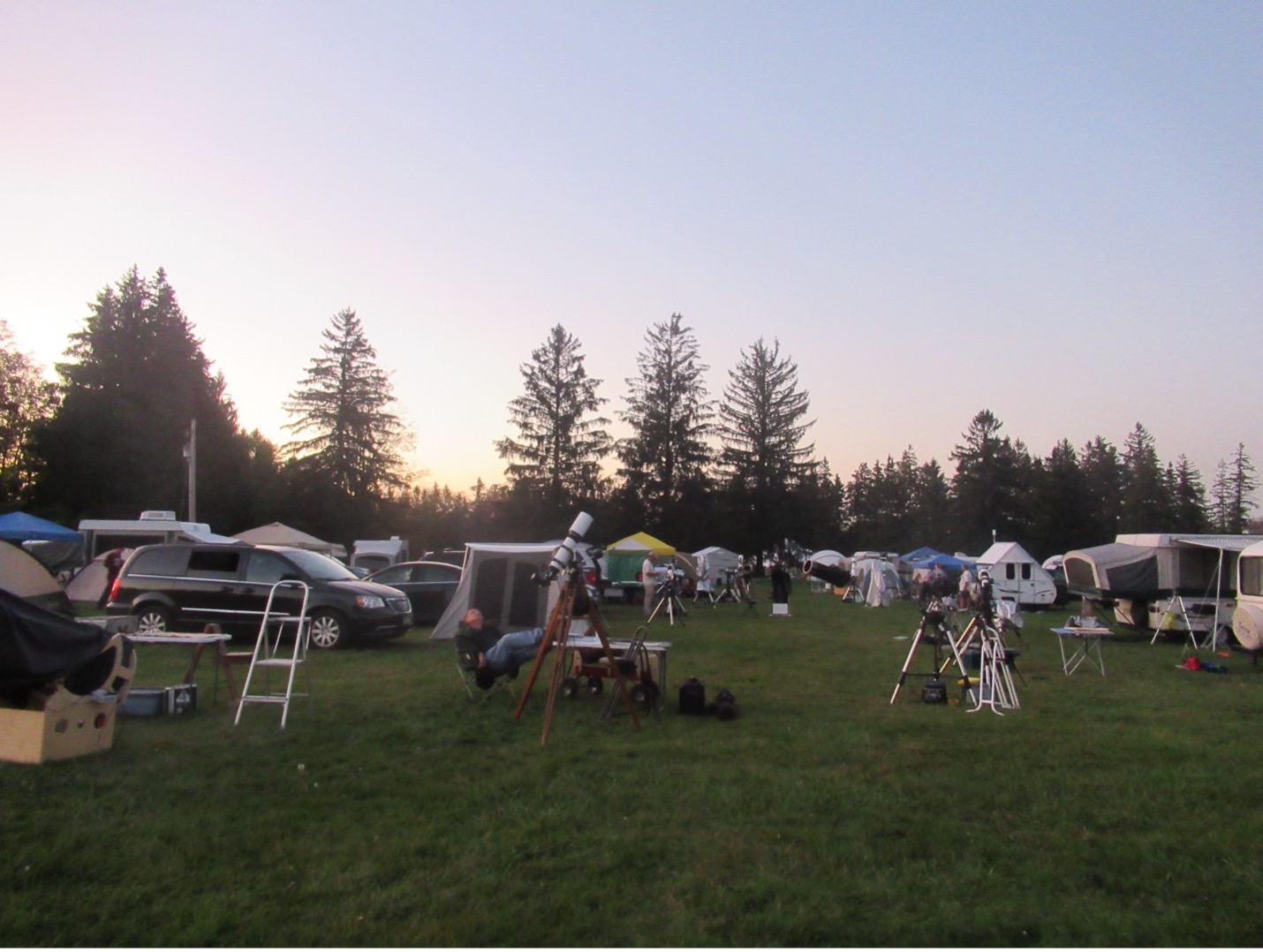
Picking the Perfect Spot
Once you know what town or city you will be in, pick a specific location to watch the eclipse.
Perhaps you can watch from a park, a museum, a library, a school, or a college campus. Many places, especially those in the path of totality, will already be planning events that visitors can attend. Contact a town’s chamber of commerce, science museum, library, or local astronomy club to ask about any events open to the public on eclipse day. You can also find a list of NASA-affiliated events on NASA’s eclipse events webpage.
When deciding where you will go, also think about what the weather might be like at your desired location during the eclipse.
Is your destination likely to have clear skies on eclipse day? If it is cloudy, raining, or snowing, you probably won’t see the eclipse.
The partially eclipsed Sun can barely be seen as a white crescent through clouds.
Credits: Vanessa ThomasBonus tip: If you’re in or near the path of totality, pick an observing spot that is away from any streetlights that might automatically turn on when the sky gets dark.
You don’t want your experience of nature’s beauty ruined by artificial light!
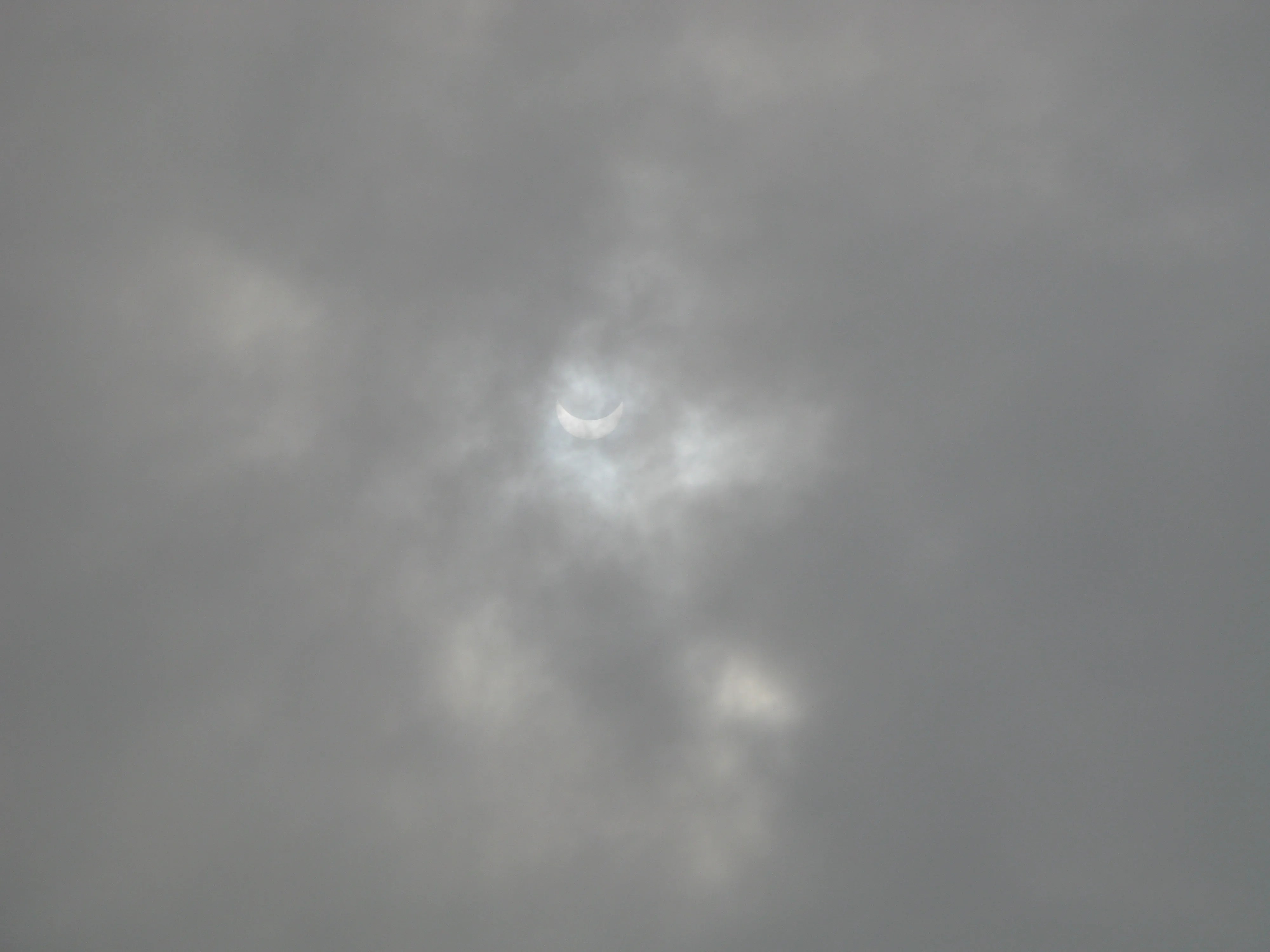
Third, plan how you will watch the eclipse safely.
It is never safe to look directly at a partially or uneclipsed Sun without proper eye protection. Only during the brief moments of totality during a total solar eclipse, when the Moon completely covers the Sun, can you look directly at a solar eclipse without eye protection.
To view a partial solar eclipse, or the partial phases of a total eclipse, you can use solar viewing glasses (often called “eclipse glasses”) or handheld solar viewers to place in front of your eyes. (Sunglasses, even very dark ones, are not safe for viewing the Sun.) Safe solar viewers are thousands of times darker and ought to comply with the ISO 12312-2 international standard.
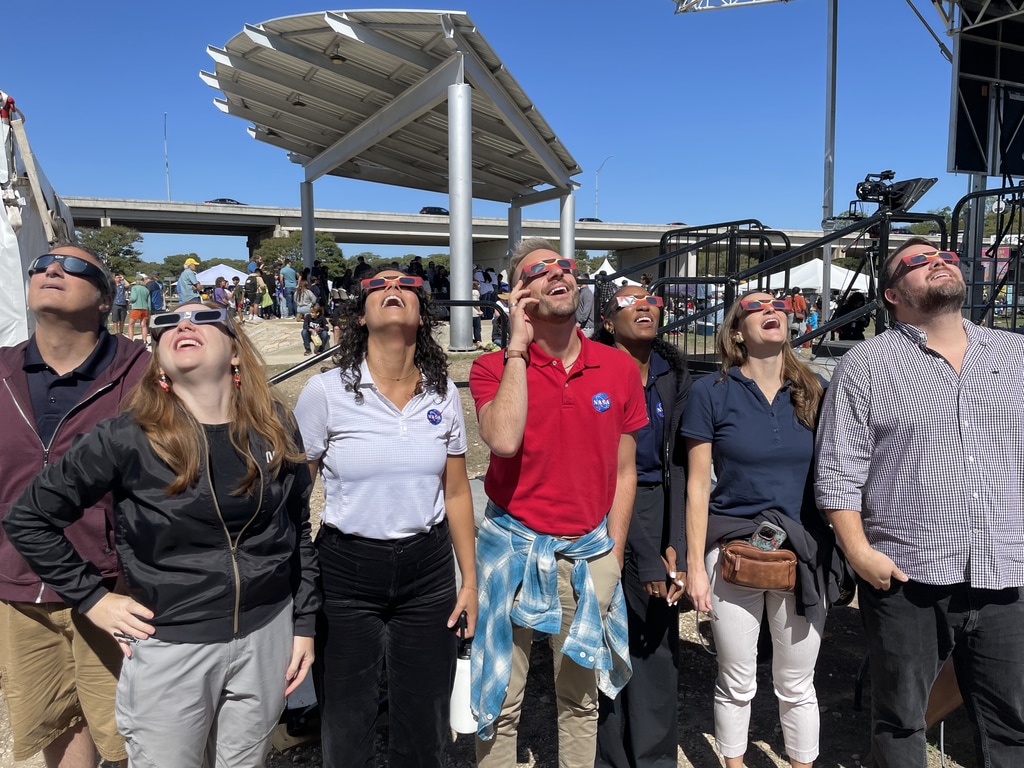
Watch Safely
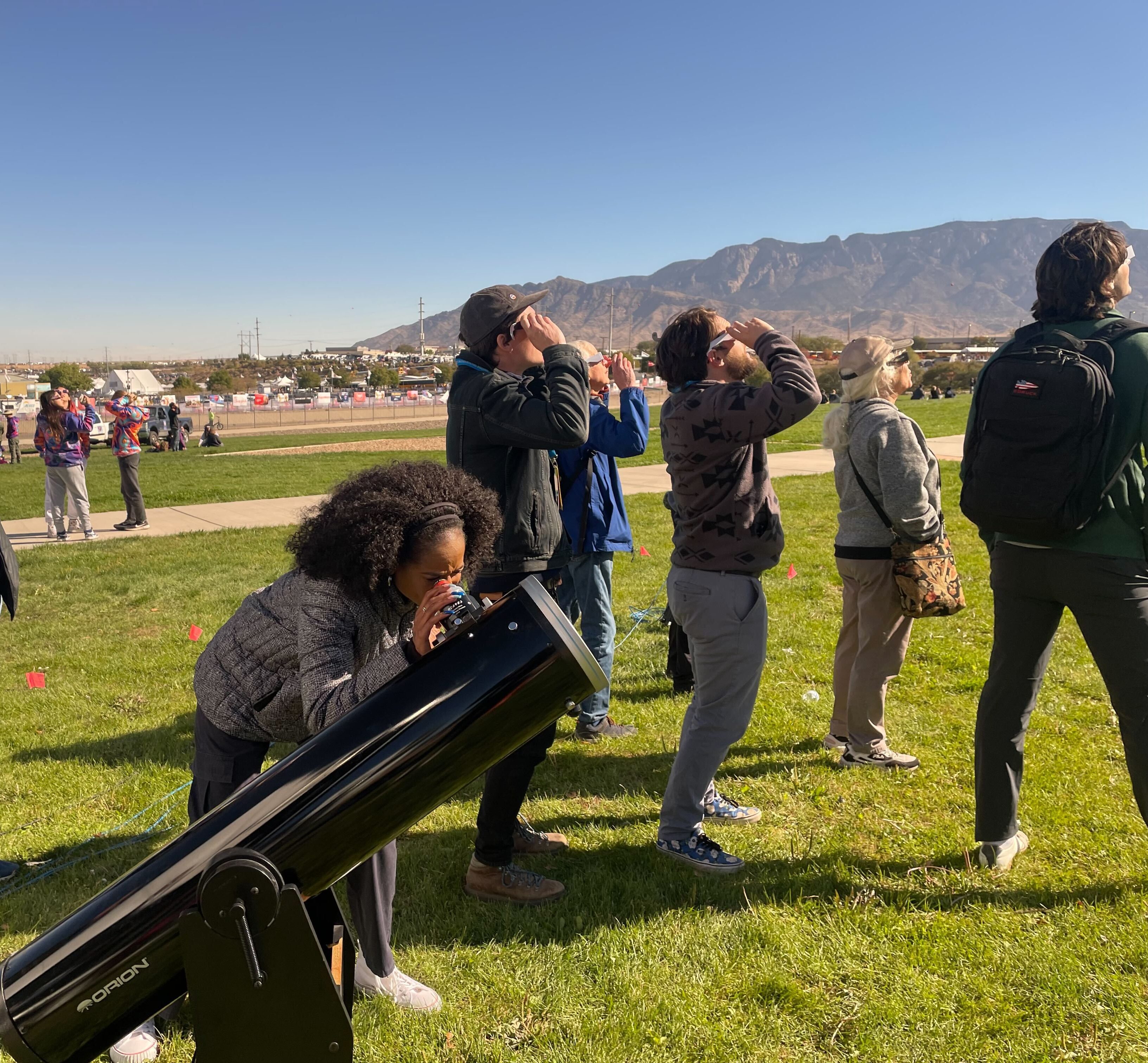 A group of people use solar viewing glasses and a solar safe telescope to watch the annular eclipse of October 14, 2023, in Albuquerque, New Mexico.NASA/Abbey Interrante
A group of people use solar viewing glasses and a solar safe telescope to watch the annular eclipse of October 14, 2023, in Albuquerque, New Mexico.NASA/Abbey InterranteFind Glasses
You might be able to find glasses at a local library, museum, or school. (Beware of unverified sellers on the internet who try to capitalize on the eclipse and might claim their glasses are safe even though they are not.) Buy or find some glasses or handheld viewers early, before they sell out, and store them in a safe place. (NASA does not approve any particular brand of solar viewers.)
A group of people use solar viewing glasses and a solar-safe telescope to watch the annular eclipse of Oct. 14, 2023, in Albuquerque, New Mexico.
Credits: NASA/Abbey Interrante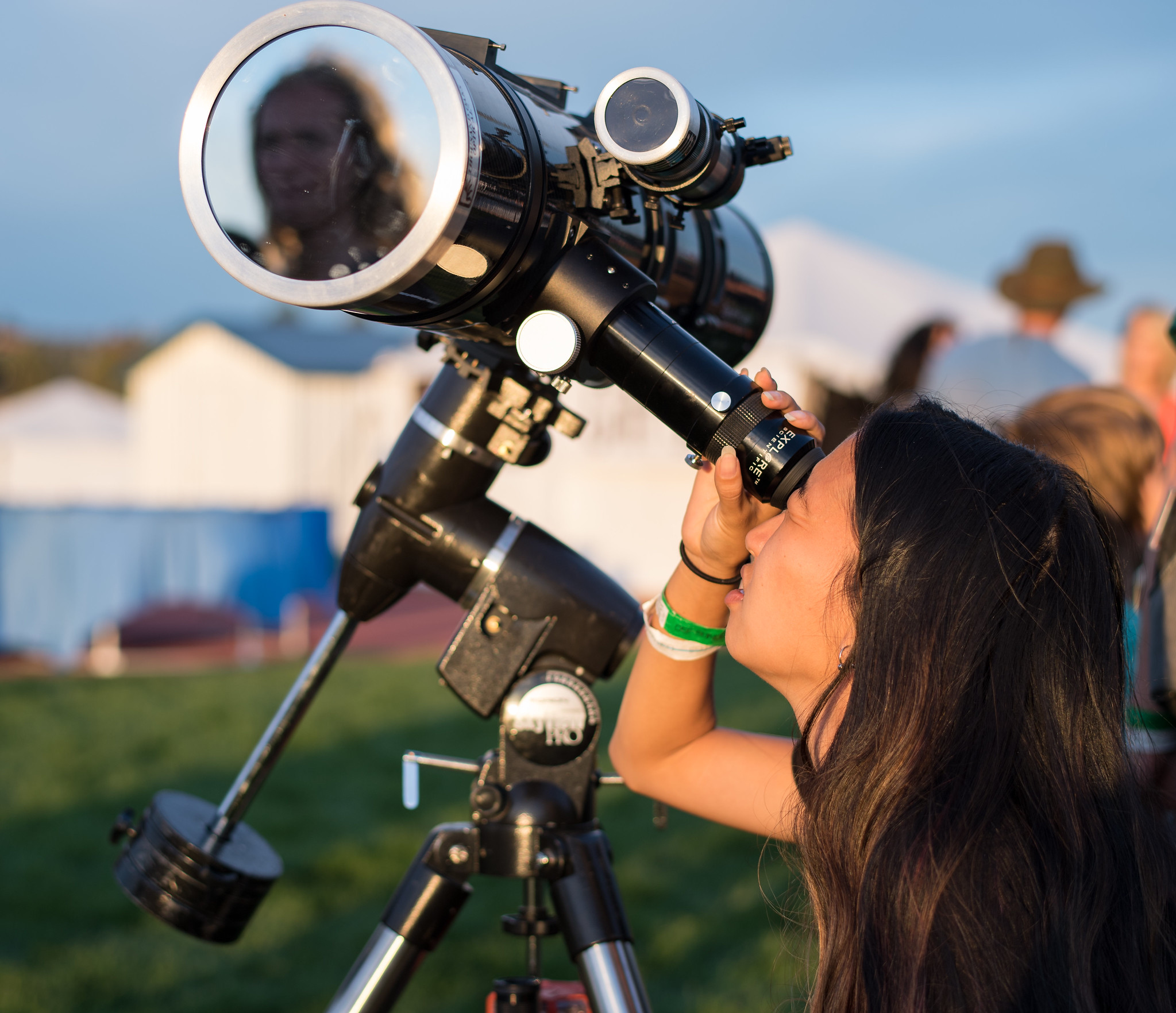 Someone looks through a telescope with a solar filter.NASA/Aubrey GemignaniNASA/Aubrey Gemignani
Someone looks through a telescope with a solar filter.NASA/Aubrey GemignaniNASA/Aubrey GemignaniGet a Closer Look
If you want to use a telescope, binoculars, or camera to view a partial eclipse, you must place a safe solar filter on the front of the device, protecting the optics from the Sun’s intense heat and light. Or you can use special solar telescopes or binoculars that are designed specifically for viewing the Sun, which have solar filters built into the instrument. Visit a vendor that specializes in astronomical equipment to purchase solar filters or other equipment dedicated to solar viewing.
Someone looks through a telescope with a solar filter.
Credits: NASA/Aubrey Gemignani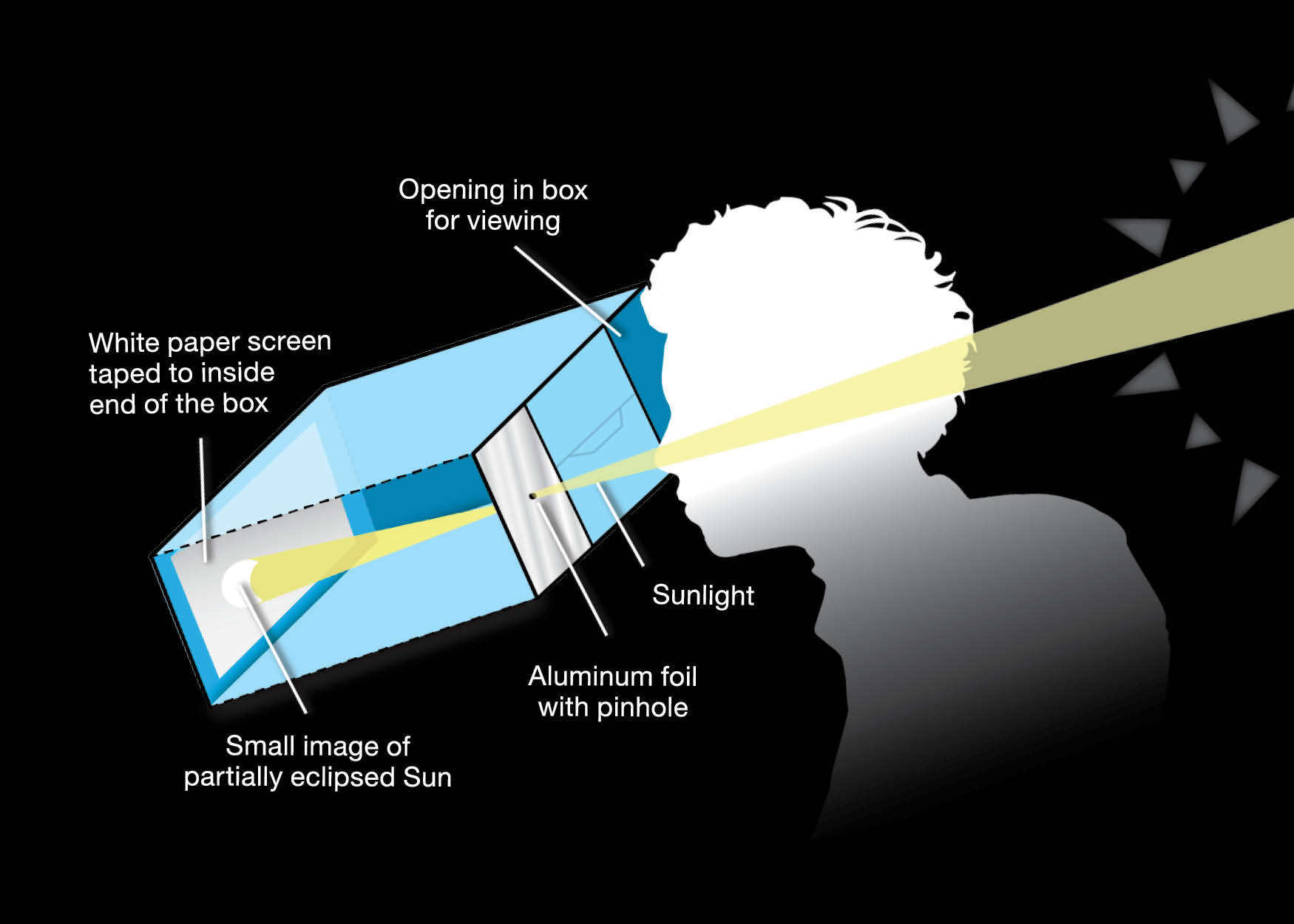 You can make your own eclipse projector using a cardboard box, a white sheet of paper, tape, scissors, and aluminum foil. With the Sun behind you, sunlight will stream through a pinhole punched into aluminum foil taped over a hole in one side of the box. During the partial phases of a solar eclipse, this will project a crescent Sun onto a white sheet of paper taped to the inside of the box. Look into the box through another hole cut into the box to see the projected image.NASA
You can make your own eclipse projector using a cardboard box, a white sheet of paper, tape, scissors, and aluminum foil. With the Sun behind you, sunlight will stream through a pinhole punched into aluminum foil taped over a hole in one side of the box. During the partial phases of a solar eclipse, this will project a crescent Sun onto a white sheet of paper taped to the inside of the box. Look into the box through another hole cut into the box to see the projected image.NASAUse an Indirect Method
You can also use an indirect method to view the partial phases of the eclipse, such as a pinhole projector. This video shows you how to make a simple pinhole projector out of a cardboard box. You can also project sunlight through any small holes, such as holes punched in a piece of cardboard, those in a strainer or colander, the holes in a straw hat, or even the gaps between the fingers of your crossed hands.
Using a cardboard box, paper, aluminum foil, scissors, and tape, you can create a box pinhole projector to show crescent images of the Sun during the eclipse’s partial phases.
Credits: NASA/Kristen Perrin
Credits: NASA's Goddard Space Flight Center
On the Morning of Eclipse Day
Get Ready!
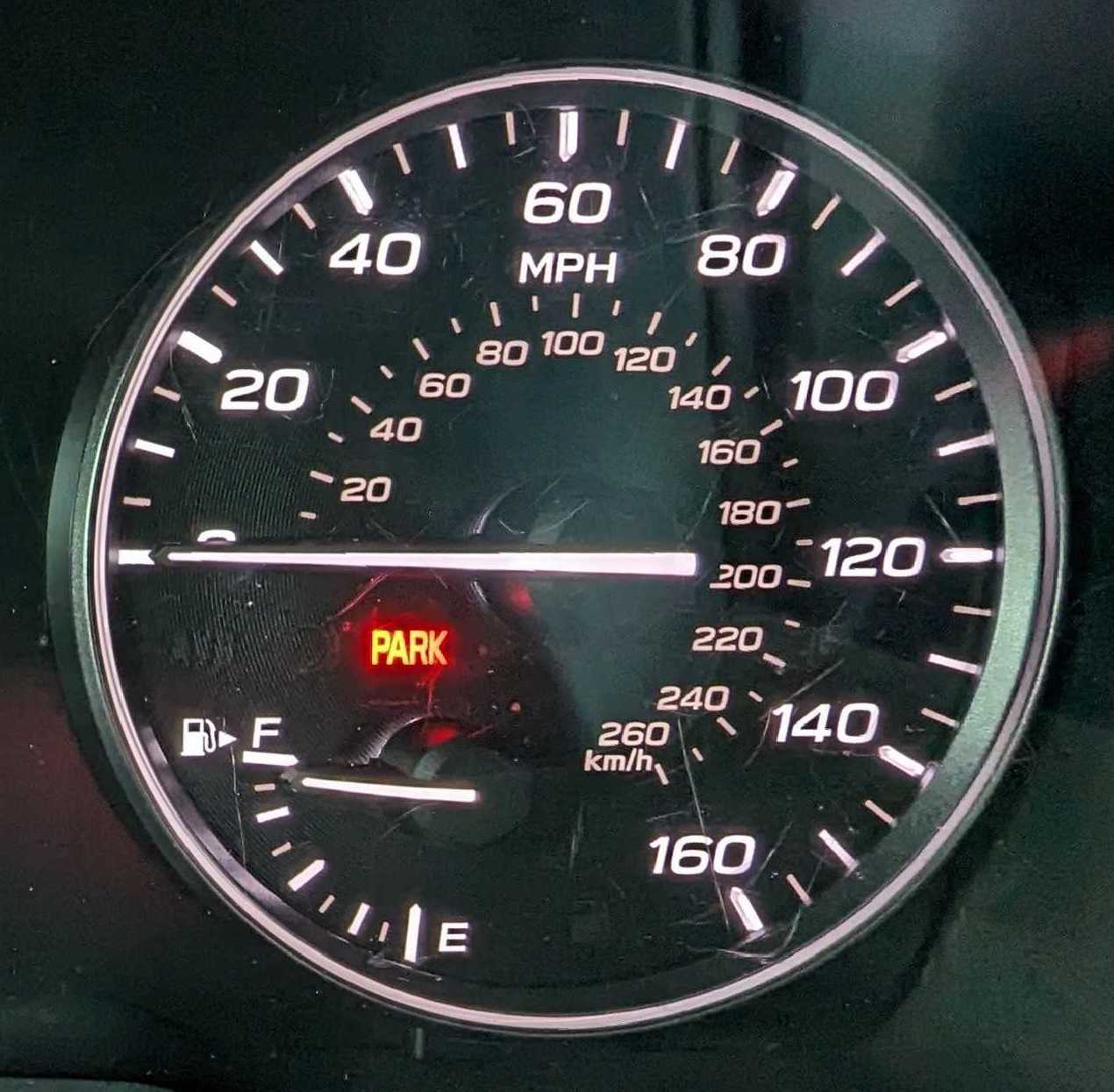 Make sure your car’s tank is full if you plan to drive anywhere on eclipse day.
Make sure your car’s tank is full if you plan to drive anywhere on eclipse day.Check Your Gas Tank
First, if you’re planning to drive anywhere today, make sure your car has plenty of gas (or charge, if it’s electric). Traffic can be heavy right after the eclipse, and you don’t want to get stranded if you are stuck in long backups. Gas stations can sometimes run out of gas if many travelers are driving to and from the same locations on the same day.
Make sure your car’s tank is full if you plan to drive anywhere on eclipse day.
Credits: NASA/Rachel Lense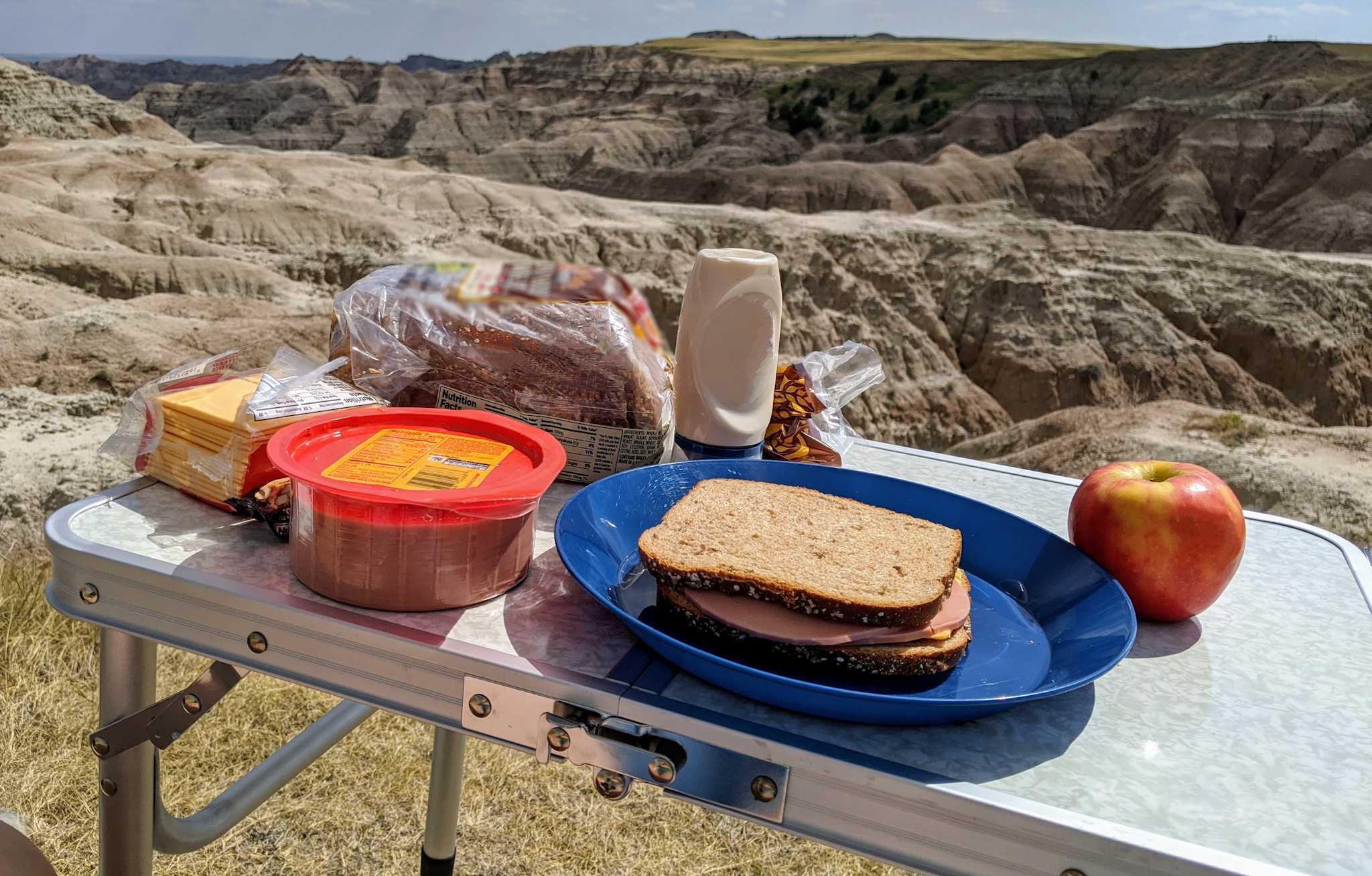 It’s a good idea to have some food or snacks with you on eclipse day.
It’s a good idea to have some food or snacks with you on eclipse day.Pack Some Snacks
Also, make sure you have enough food and water for the day. Restaurants and grocery stores, especially those in small towns, can get very busy or possibly run out of food when serving many more customers than they’re used to.
It’s a good idea to have some food or snacks with you on eclipse day.
Credits: Rachel Lense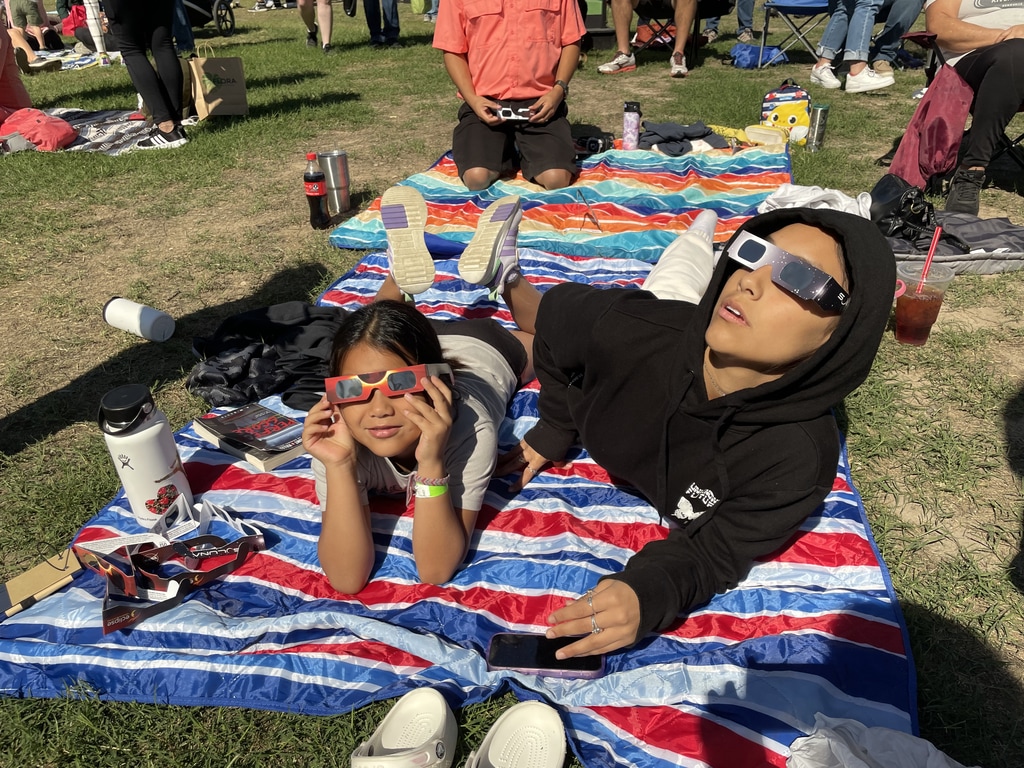 People use solar viewing glasses to watch the annular eclipse of October 14, 2023.NASA
People use solar viewing glasses to watch the annular eclipse of October 14, 2023.NASAGet Comfortable
Remember to gather your solar viewing glasses or other solar filters to watch the eclipse safely, as well as sunscreen, chairs, blankets, jackets, hats, phones, cameras, and anything else you need to be comfortable and to enjoy the eclipse.
Finally, get to your eclipse-watching site early, before the partial eclipse starts. You don’t want to be late and miss the exciting moment when the Moon takes its first “bite” out of the Sun!
Bring a blanket, chairs, drinks, snacks, sunscreen, eclipse glasses, and anything else you need to be comfortable while watching the eclipse.
Credits: NASA
During the Eclipse
What You'll Experience
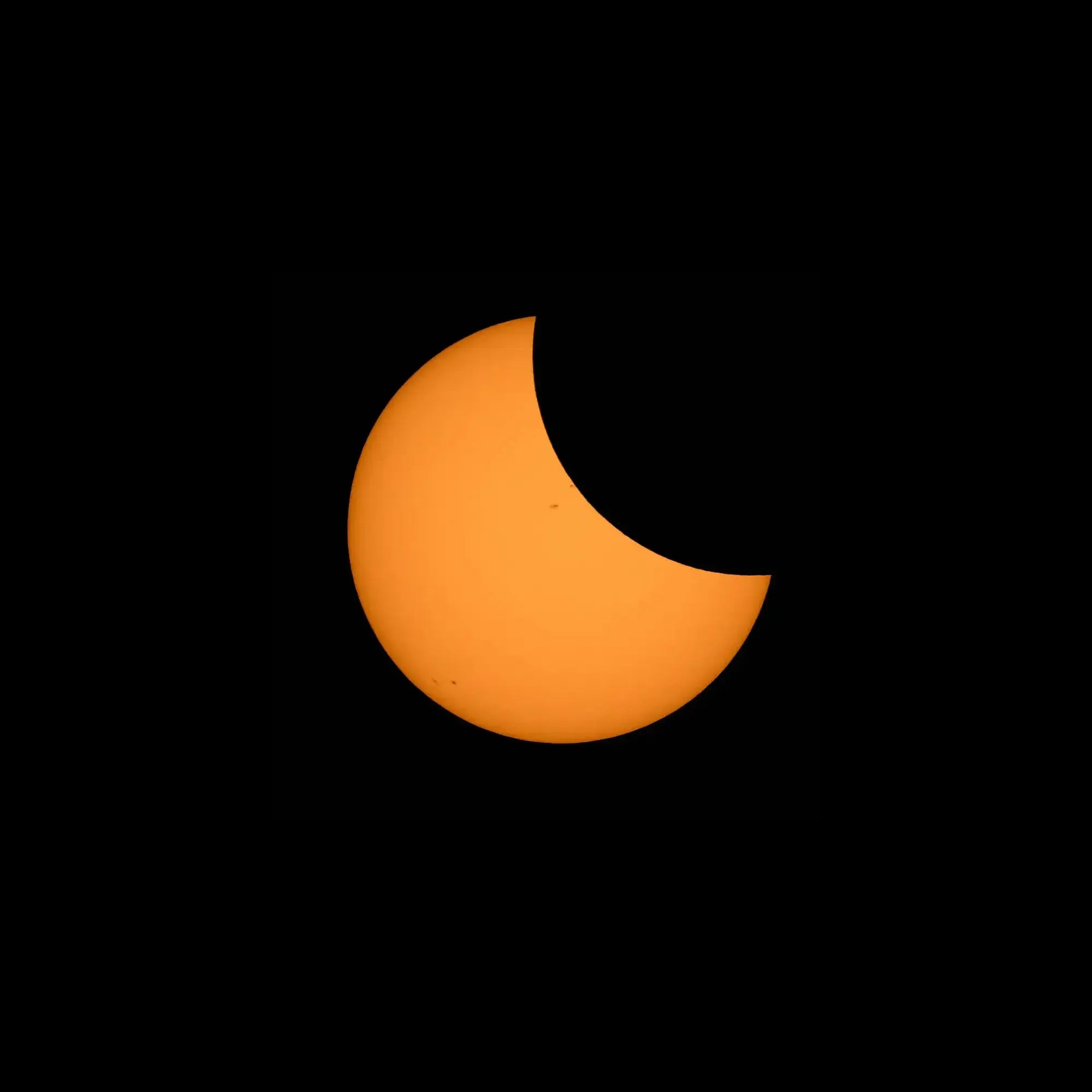
The Beginning
Once the eclipse starts, the Moon will spend an hour or so gradually covering more and more of the Sun.
During the early stages of the eclipse, the Moon will block only a portion of the Sun’s disk.
Credits: NASA/Bill Ingalls Crescent suns are projected through tree leaves onto the ground during a solar eclipse on October 14, 2023.Crescent suns are projected through tree leaves onto the ground during a solar eclipse on October 14, 2023.NASA/Abbey Interrante
Crescent suns are projected through tree leaves onto the ground during a solar eclipse on October 14, 2023.Crescent suns are projected through tree leaves onto the ground during a solar eclipse on October 14, 2023.NASA/Abbey InterranteLook Around
During these partial phases of the eclipse, create or use a pinhole projector to see images of the crescent Sun. If you are near any trees with leaves, look at the shadows cast by the leaves for small solar crescents. You can also use solar viewing glasses or other solar filters to view the Sun directly.
Crescent suns are projected through tree leaves onto the ground during a solar eclipse on October 14, 2023.
Credits: NASA/Abbey Interrante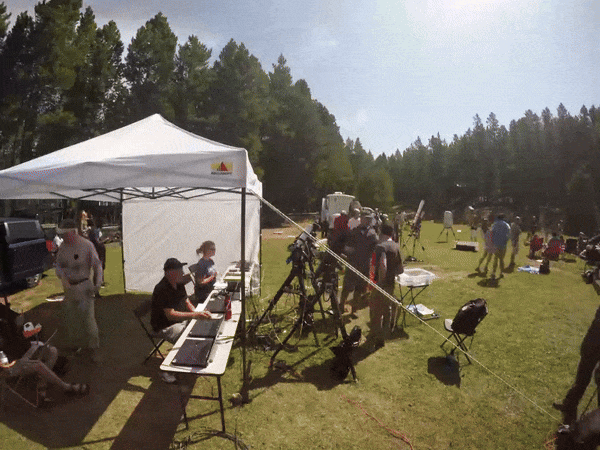 The color of the sky and the natural light changes as totality nears, as seen in this timelapse video taken during a total solar eclipse on August 21, 2017.Sarah Frazier
The color of the sky and the natural light changes as totality nears, as seen in this timelapse video taken during a total solar eclipse on August 21, 2017.Sarah FrazierAbout 15 Minutes Before Totality
When the Moon is covering most of the Sun, watch for the ambient light to change and grow dimmer. The change will become more pronounced in the last 15 minutes before totality. The light may look eerie or strange. Even if it’s cloudy and you can’t see the Sun, the skies will still grow darker.
The color of the sky and the natural light changes as totality nears, as seen in this timelapse video taken during a total solar eclipse on Aug. 21, 2017.
Credits: Sarah Frazier Birds, insects, or other animals might change their behavior just before totality.U.S. National Park Service
Birds, insects, or other animals might change their behavior just before totality.U.S. National Park ServiceAbout 10 Minutes Before Totality
Begin to listen for changes in bird and insect sounds, or look for changes in their behavior. As the sunlight fades, wildlife might act as if nighttime is approaching.
As the Sun becomes a thin crescent, shadows around you will become sharper. Look to see if you can spot more details in your own shadow.
Birds, insects, or other animals might change their behavior just before totality.
Credits: U.S. National Park Service
For Observers in the Path of Totality
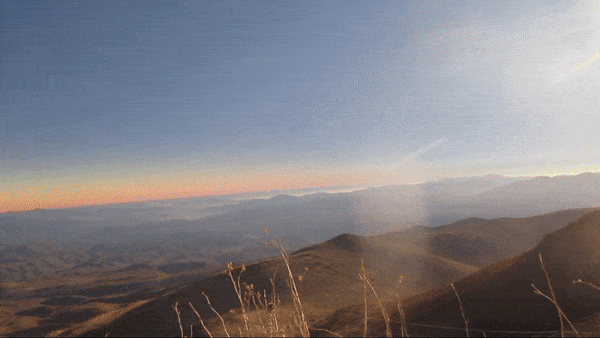 In this sped-up video, recorded in Chile just before a total solar eclipse on July 2, 2019, the Moon’s shadow darkens the landscape to the west (left) as totality approaches.
In this sped-up video, recorded in Chile just before a total solar eclipse on July 2, 2019, the Moon’s shadow darkens the landscape to the west (left) as totality approaches.About 3 Minutes Before Totality
If you are on a hill or atop a tall building, look to see if you can spot the Moon’s shadow approaching you across the landscape from the west a few minutes before totality. The sky will likely look darker in the west than in the east.
In this sped-up video, recorded in Chile just before a total solar eclipse on July 2, 2019, the Moon’s shadow darkens the landscape to the west (left) as totality approaches.
Credits: Vanessa Thomas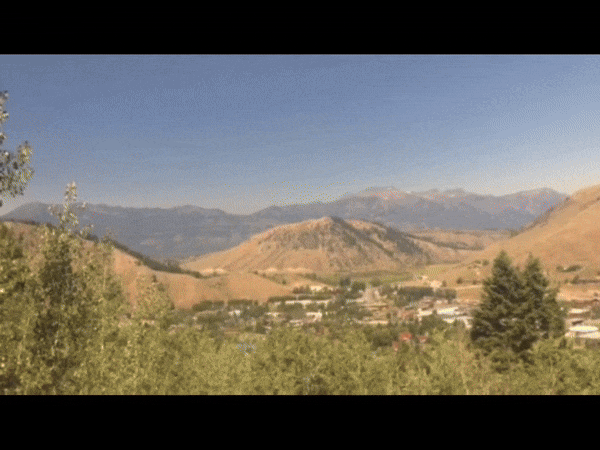
One to Two Minutes Before Totality
Look for a phenomenon called shadow bands on white or light-colored surfaces. As light from the thin, crescent Sun gets bounced around by turbulent air in our atmosphere, it produces faint, rippling waves of light and dark that can be seen on light-colored surfaces. Look close for these shadow bands on the sides or tops of white cars, white walls, or on a large, white sheet, if you have one.
By now, you will likely begin to hear people around you gasping or shouting as totality nears.
This video, taken in Jackson Hole, Wyoming, just before totality on Aug. 21, 2017, captures the Moon’s shadow darkening the landscape and shadow bands on the photographer’s outstretched hand.
Credits: Rafi Sela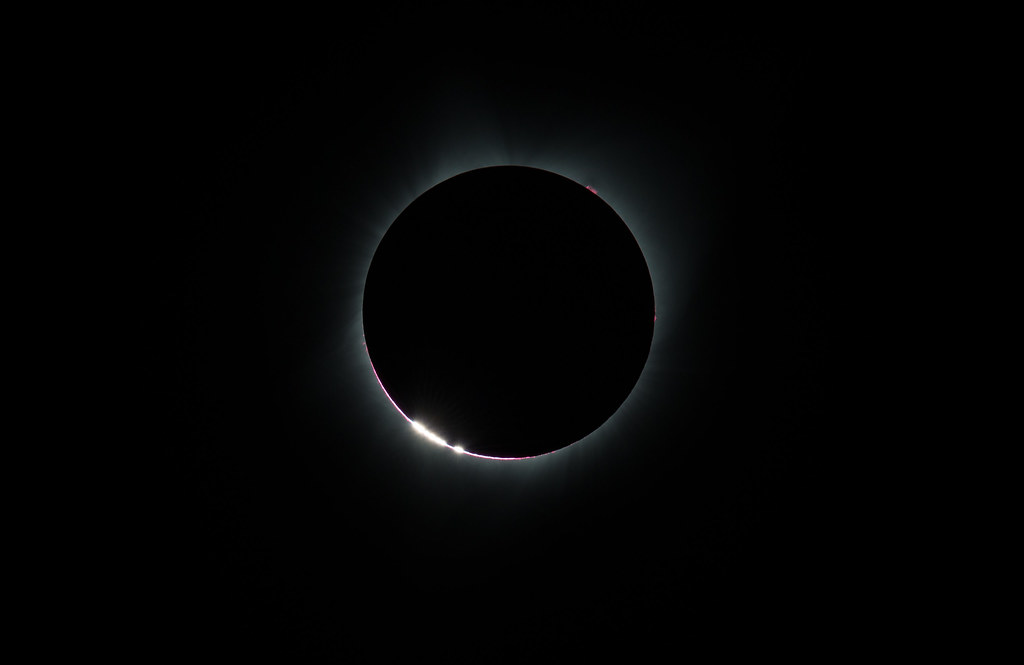 Baily's Beads appear as the Moon makes its final move over the Sun during the total solar eclipse on Monday, Aug. 21, 2017 above Madras, Oregon.NASA/Aubrey Gemignani
Baily's Beads appear as the Moon makes its final move over the Sun during the total solar eclipse on Monday, Aug. 21, 2017 above Madras, Oregon.NASA/Aubrey GemignaniSeconds Before Totality
With your solar viewing glasses or other solar filters still on, you’ll see the Moon almost completely cover the Sun, leaving a few bright spots of sunlight shining through valleys on the Moon (called Baily’s Beads) or one bright gleam of light on one side of the Moon, forming what looks like a diamond ring in the sky.
Baily’s Beads appear just before and after totality when sunlight shines through valleys on the edge of the Moon.
Credits: NASA/Aubrey Gemignani
Totality
 The total solar eclipse on Aug. 21, 2017, was photographed from Madras, Oregon. The black circle in the middle is the Moon. Surrounding it are white streams of light belonging to the Sun’s outer atmosphere, called the corona.NASA/Aubrey Gemignani
The total solar eclipse on Aug. 21, 2017, was photographed from Madras, Oregon. The black circle in the middle is the Moon. Surrounding it are white streams of light belonging to the Sun’s outer atmosphere, called the corona.NASA/Aubrey GemignaniThe Start of Totality
Once the last glimmer of sunlight disappears and you can no longer see anything through your glasses or solar filter, it’s totality! Remove your eye protection and look at the eclipse. Chances are, people all around you will be cheering and shouting.
Now you can see the Sun’s brilliant white corona, or outer atmosphere, shining all around the Moon’s black disk. Notice the shape of the corona and any long “streamers” extending across the darkened sky.
The glowing white corona is a beautiful sight to behold when the Moon completely covers the Sun. Your eye might catch long “streamers,” or parts of the corona that extend farther away from the Sun across the darkened sky.
Credits: NASA/Aubrey Gemignani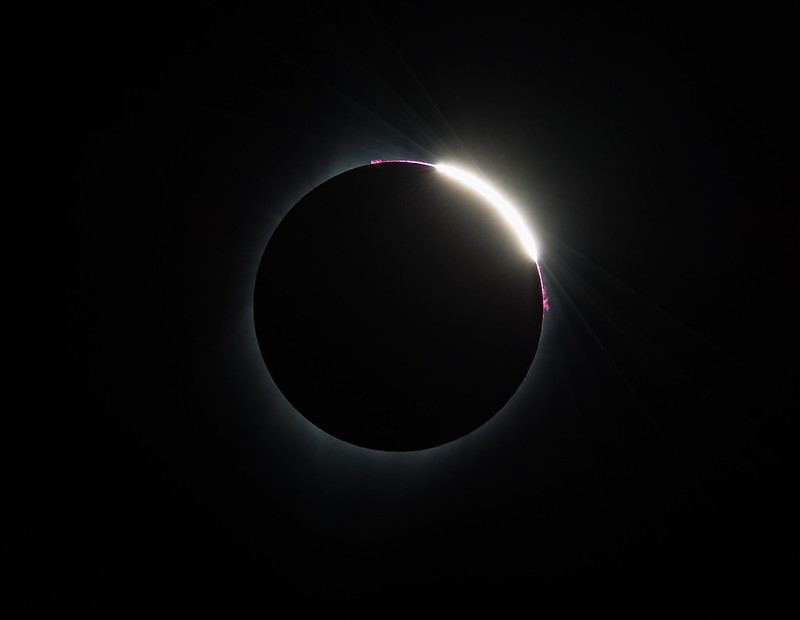 Solar prominences appear as pink features rising from the edges of the eclipsed Sun during a total solar eclipse. Cameras can even capture them just before or after totality, as seen here.NASA/Aubrey Gemignani
Solar prominences appear as pink features rising from the edges of the eclipsed Sun during a total solar eclipse. Cameras can even capture them just before or after totality, as seen here.NASA/Aubrey GemignaniProminences
Also look for pink features around the edge of the Moon. This pink color marks the middle part of the Sun’s atmosphere, the chromosphere. You might also see pink clouds of material, called solar prominences, stretching out from behind the Moon.
Solar prominences appear as pink features rising from the edges of the eclipsed Sun during a total solar eclipse. Cameras can even capture them just before or after totality, as seen here.
Credits: NASA/Aubrey Gemignani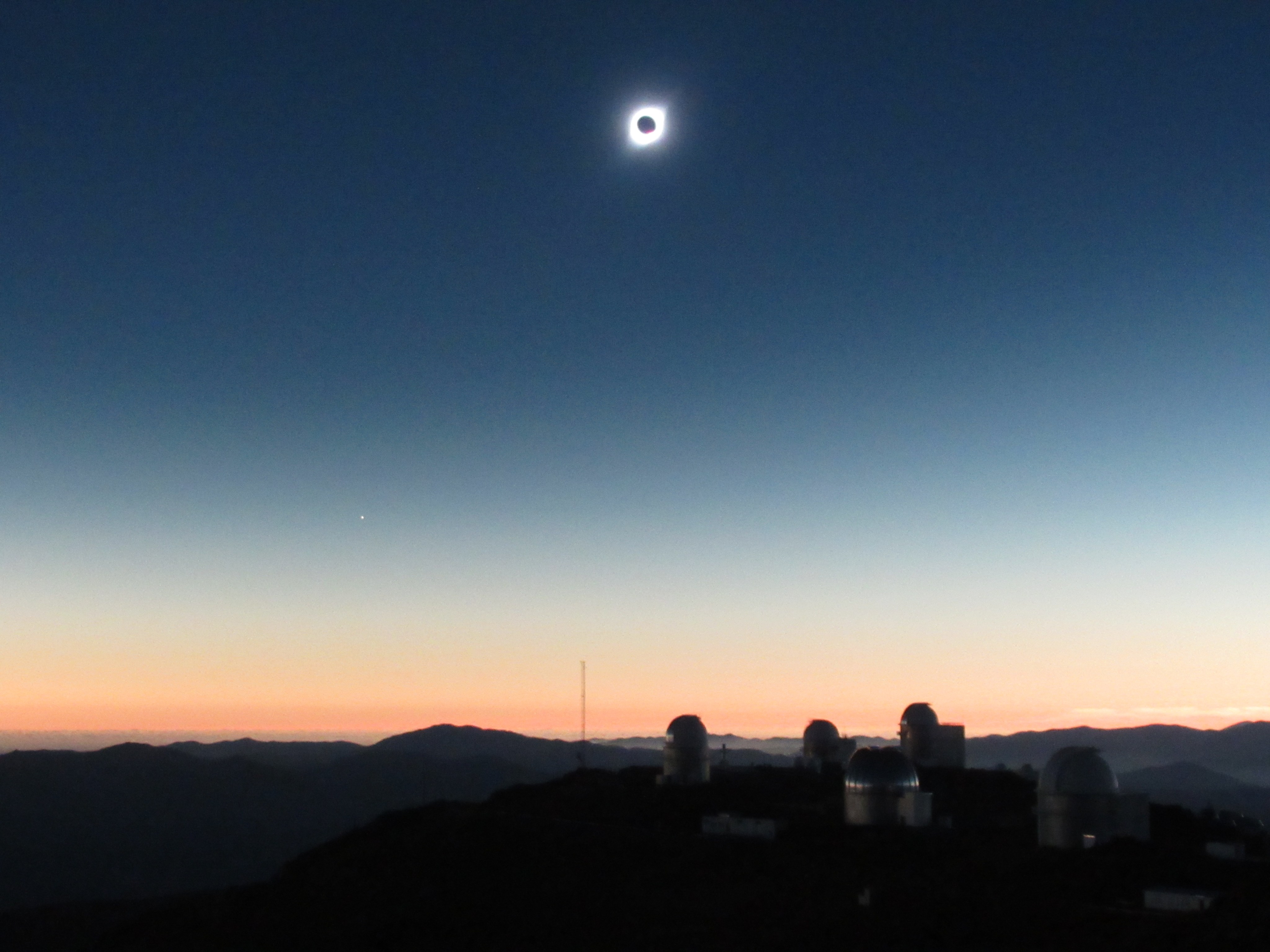 The planet Venus appears as a bright white dot in the sky to the lower left of the eclipsed Sun during a total solar eclipse in July 2019.Vanessa Thomas
The planet Venus appears as a bright white dot in the sky to the lower left of the eclipsed Sun during a total solar eclipse in July 2019.Vanessa ThomasPlanets and Sunset-Like Glow
Farther away from the Sun and Moon, look to see if you can spot any bright planets or stars in the sky. You might even be able to spot the tail of a comet if there is one nearby!
Now look at the horizon. You might notice a sunset-like glow in every direction you look – what eclipse enthusiasts call a 360-degree sunset.
The planet Venus appears as a bright white dot in the sky to the lower left of the eclipsed Sun during a total solar eclipse in July 2019.
Credits: Vanessa Thomas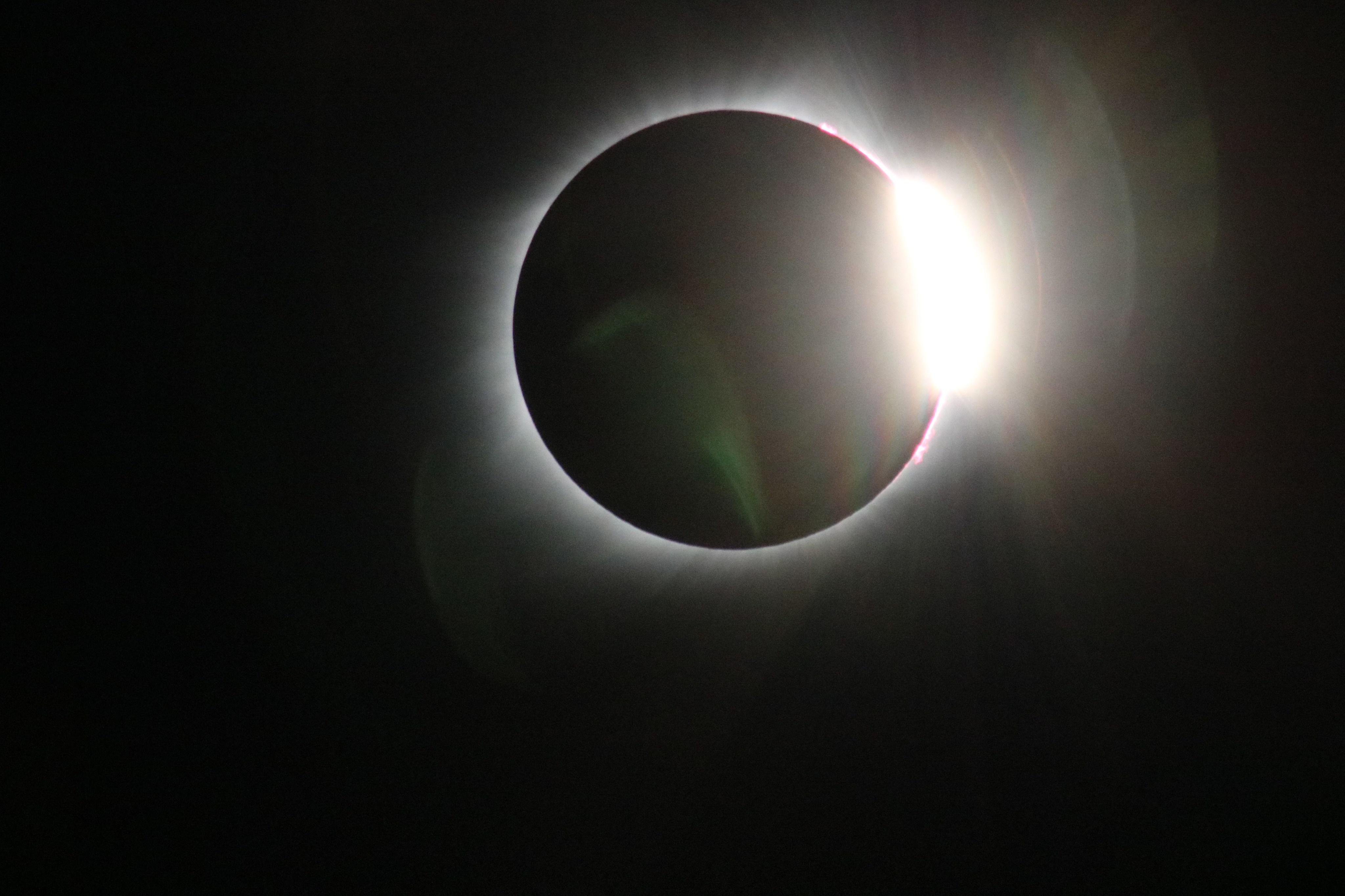 The diamond ring effect happens when a sliver of sunlight appears on the edge of the Moon, just before or after totality.NASA/Natchimuthuk Gopalswamy
The diamond ring effect happens when a sliver of sunlight appears on the edge of the Moon, just before or after totality.NASA/Natchimuthuk GopalswamyEnd of Totality
As totality ends, you’ll see bursts of sunlight appearing once again along the edge of the Sun. Put your eclipse glasses or other solar filters back on over your eyes and any telescopes, binoculars, or cameras.
While they likely grew quiet while taking in the awe of totality, expect people around you to cheer and clap once again as sunlight begins to brighten up the sky.
Look once again to see if you can spot shadow bands waving on white or light-colored surfaces. If you’re up high, look to see if you can see the Moon’s shadow race away from you toward the east.
The diamond ring effect happens when a sliver of sunlight appears on the edge of the Moon, just before or after totality.
Credits: NASA/Natchimuthuk Gopalswamy
Final Partial Phases
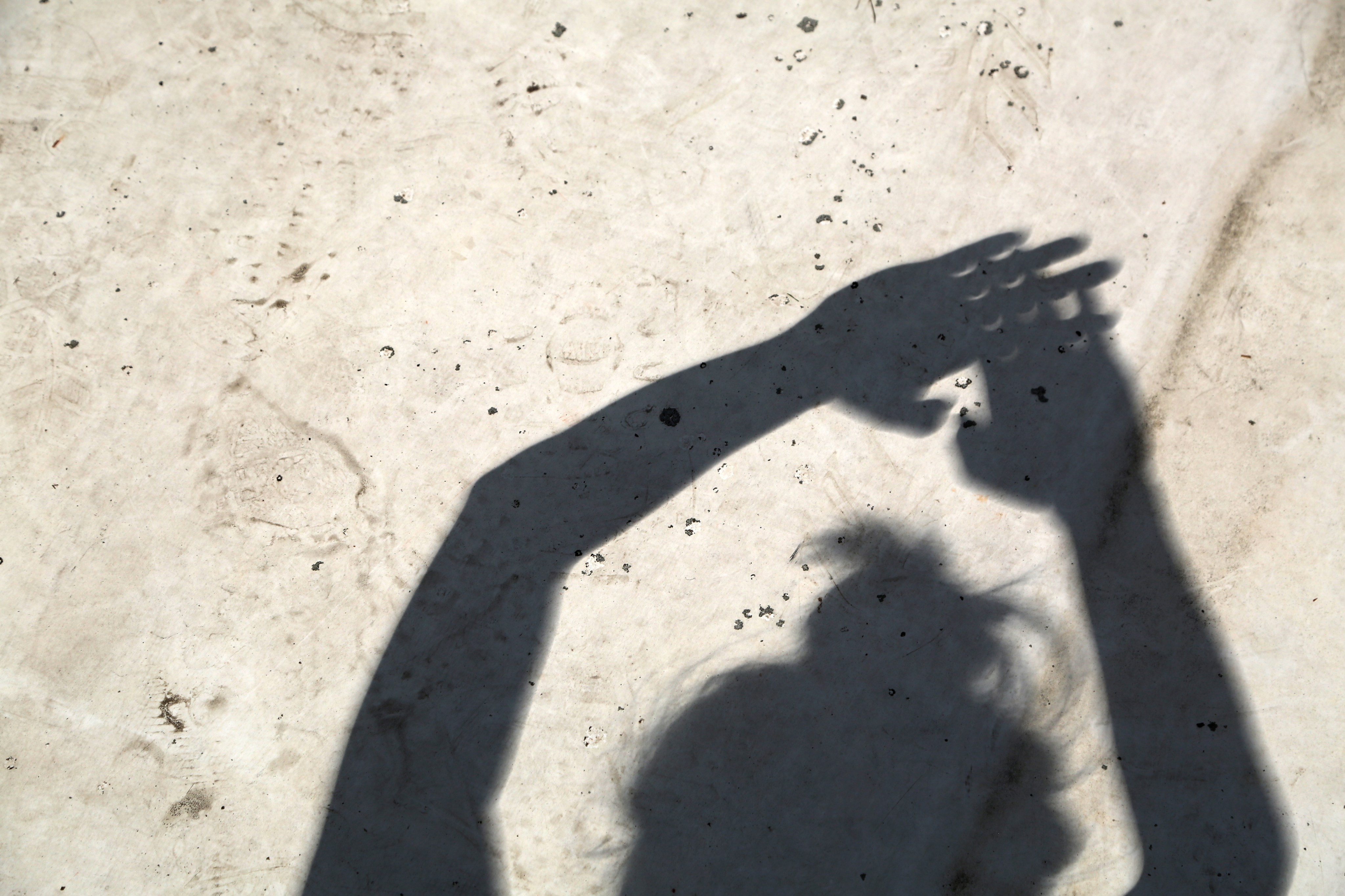 Crescent suns appear in pinhole projections during the partial phases of a solar eclipse.
Crescent suns appear in pinhole projections during the partial phases of a solar eclipse.Pinhole Projections
As the sky grows brighter, notice the air temperature begin to rise.
Crescent suns will reappear in the shadows of tree leaves or in pinhole projections.
Crescent suns appear in pinhole projections during the partial phases of a solar eclipse.
Credits: Sean Simmons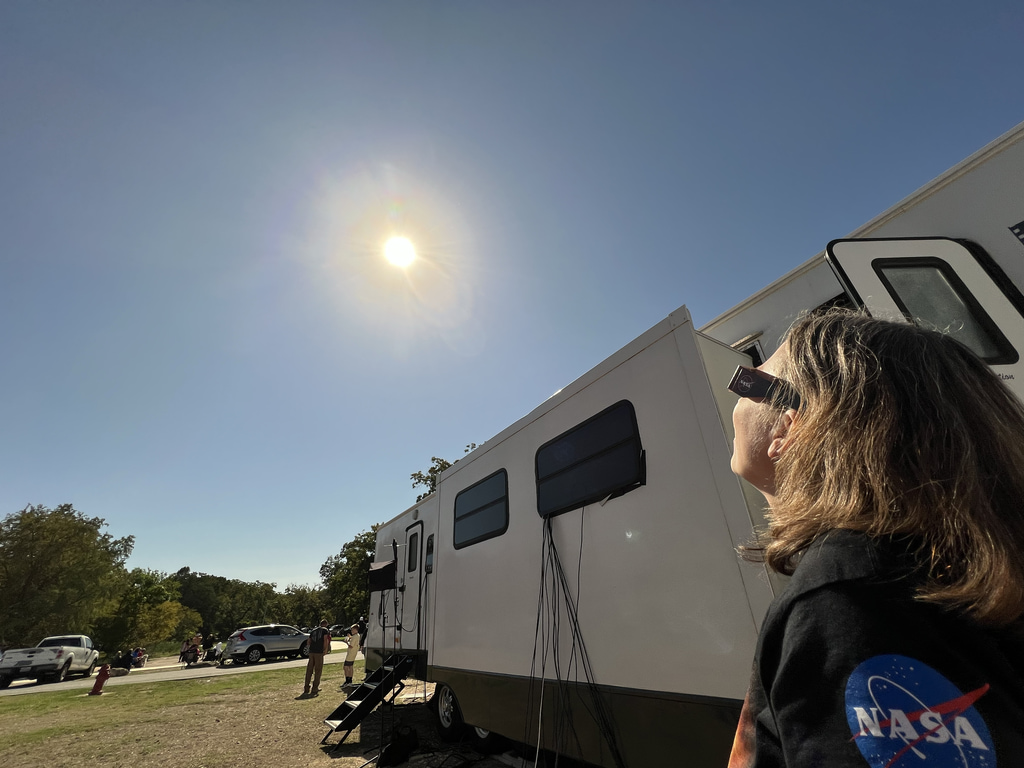 A person views the Sun using eclipse glasses.
A person views the Sun using eclipse glasses.End of the Eclipse
After about an hour, the Moon will completely uncover the Sun, and all will return to normal once again.
A person views the Sun using eclipse glasses.
Credits: NASA
After the Eclipse
The Excitement Doesn't End
Sharing Your Photos
You’ll likely be excited to share your experiences and photos (if you took any) with those around you. You might want to exchange contact information with other people you met so you can share photos or videos later on.
Numerous cell phones and cameras are pointed toward the total solar eclipse at the Oregon State Fairgrounds on Aug. 21, 2017.
Credits: NASA/Dominic HartAvoiding Crowds
Many people will leave soon after totality ends. If you want to avoid crowds and traffic, wait and enjoy the final partial phases of the eclipse until the eclipse is completely over. By the time the Moon has fully moved away from the Sun and the eclipse ends, the crowds might be much thinner.
Getting Home
However, there might continue to be traffic jams on major roads and highways for a few hours. If possible, linger even longer at your current location. Enjoy dinner or conversations with others who experienced the eclipse with you, and perhaps even spend the night in the town or city where you watched the eclipse. If you need to journey home, traveling the day after the eclipse might be easier than immediately after the eclipse.
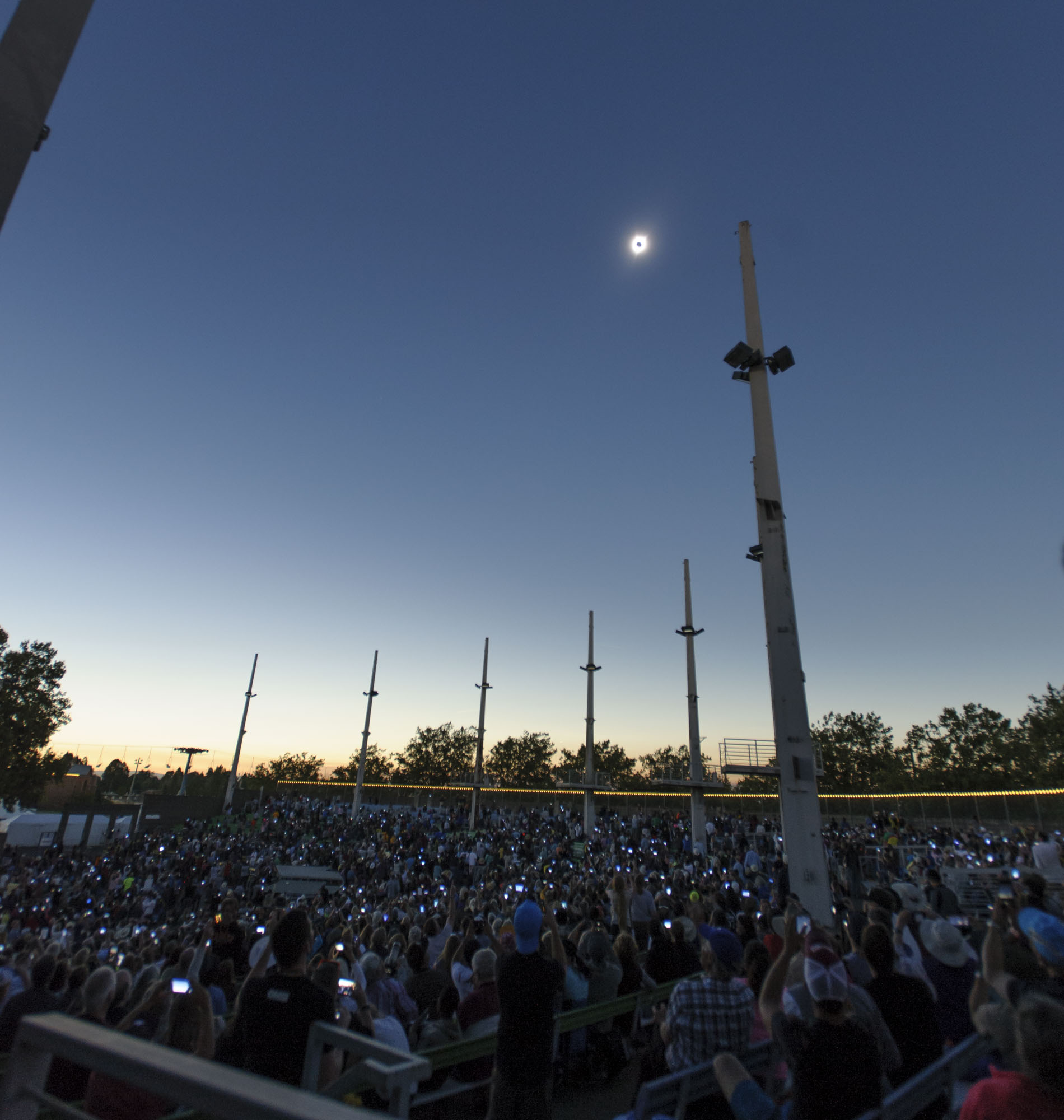
This Eclipse and Beyond
Today’s excitement might also encourage you to start looking forward to the next eclipse.
Check out NASA’s future eclipses page to start planning your next eclipse experience!
Credits: NASA/Aubrey Gemignani

